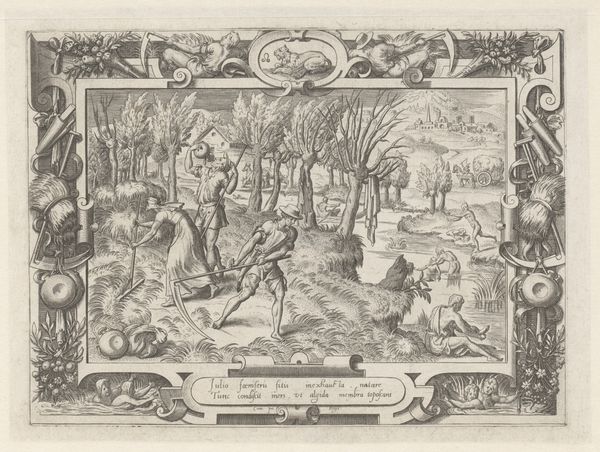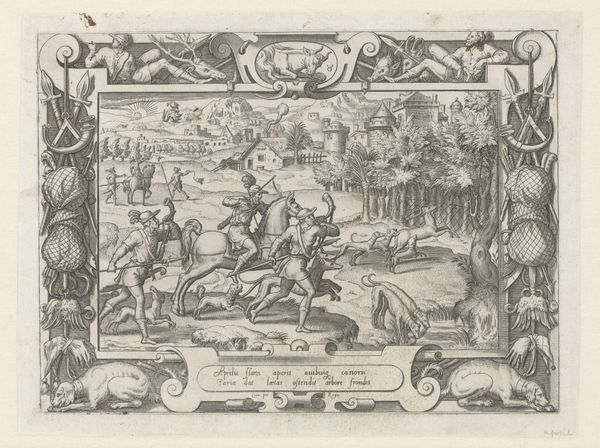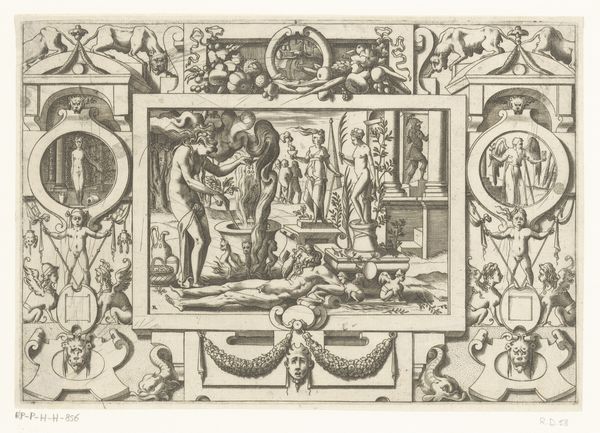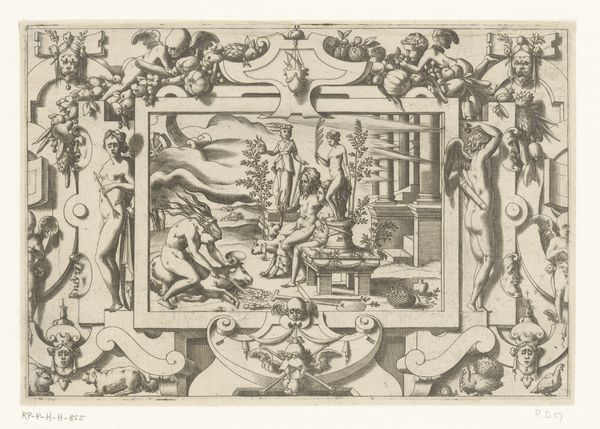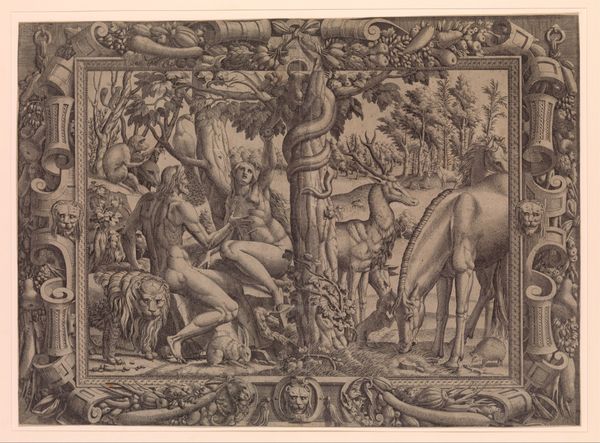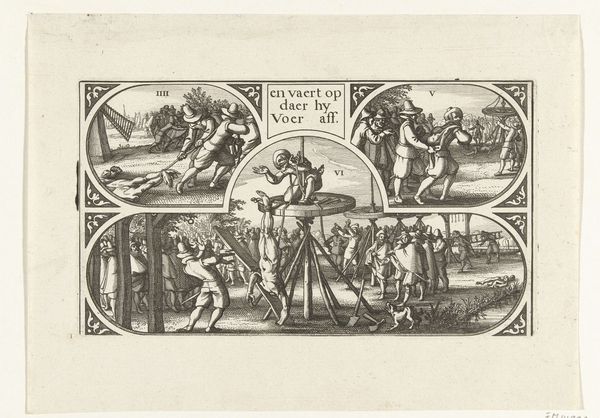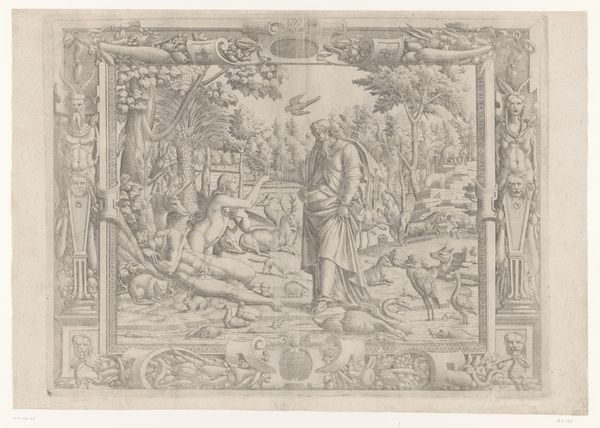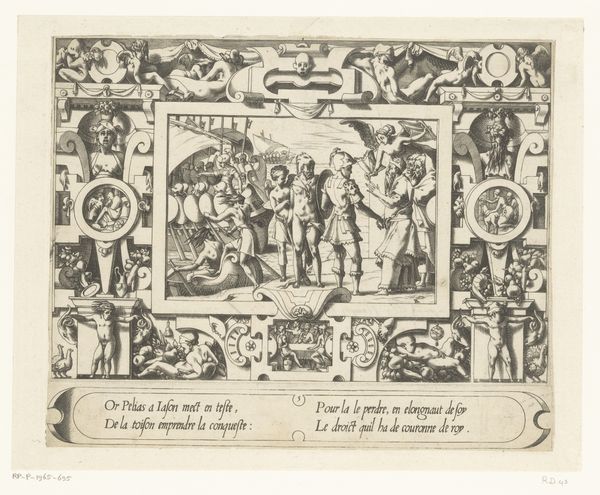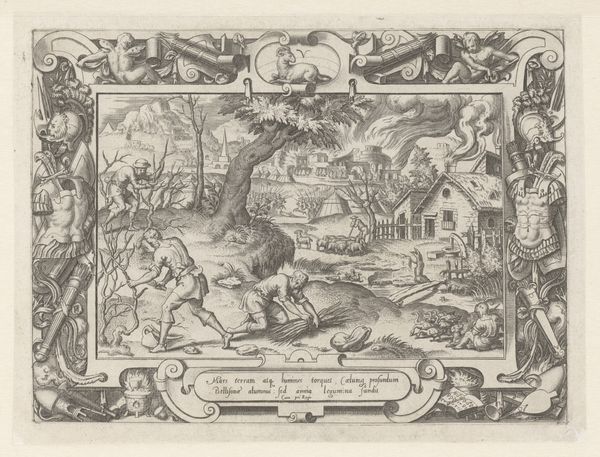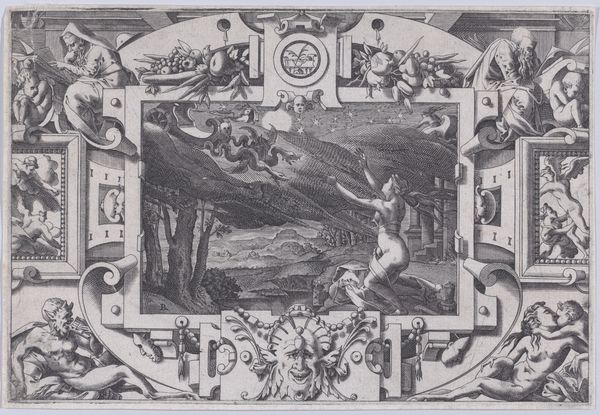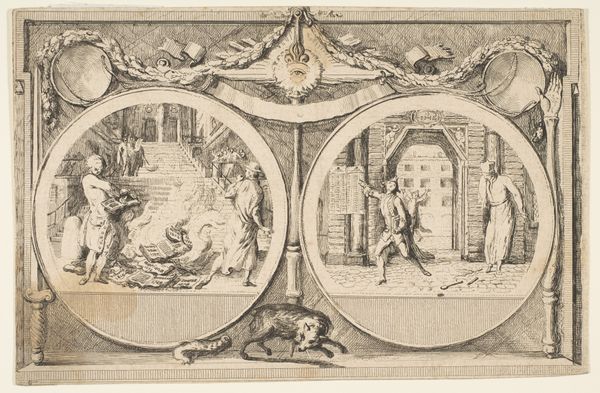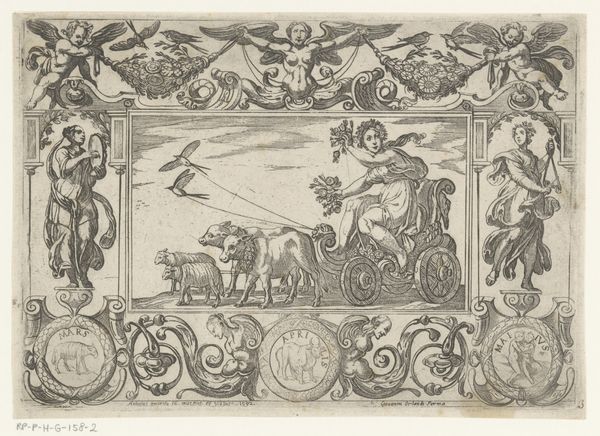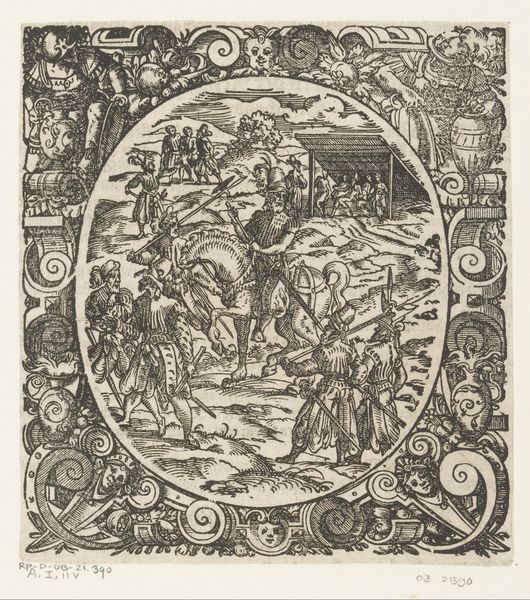
print, engraving
#
allegory
#
pen drawing
# print
#
pen illustration
#
old engraving style
#
mannerism
#
figuration
#
11_renaissance
#
line
#
history-painting
#
engraving
Dimensions: height 160 mm, width 234 mm
Copyright: Rijks Museum: Open Domain
Editor: We’re looking at “Jason tempting the two bulls of Mars,” a print made in 1563 by René Boyvin. It's an engraving, giving it incredibly fine lines and detail. The composition is packed with figures! What jumps out to you? Curator: The symbols are clamoring for attention, aren’t they? The oxen themselves are powerful, literally representing brute force and martial prowess—connected as they are to Mars. Jason's act of "tempting" suggests manipulation of that power. Does that feel different from direct confrontation? Editor: Definitely. It's cunning, not just strength. Also, what's with the skeleton on the ground? Curator: Ah, a *memento mori*, wouldn't you agree? A reminder of mortality, a frequent player in allegorical prints like this one. It emphasizes the stakes involved in Jason’s quest. Power and glory… but at what cost? The artist positions it literally beneath Jason’s feet, and therefore under his power. Are the implications becoming clearer? Editor: I think so! He’s using his wits to overcome death… or at least, ignore it for now, in pursuit of victory. That really brings out the complexity of the hero archetype. And how does the ornamental border play into it all? Curator: Notice the grotesque masks, the putti. Borders frame narratives but also reflect them. These are symbols of life, death, fertility, fear. They're a reminder that stories of heroism always take place within the larger cycle of human experience. So many layers! Editor: This makes me see the engraving as much more than just a historical depiction. It's a meditation on power and mortality, wrapped in this incredibly intricate visual language. Thanks, I would have just seen the surface without your help! Curator: Precisely! And that intricate visual language, remembered over centuries, helps us access deep veins of cultural meaning still resonant today. It continues to remind us to consider more deeply all that our visual world offers.
Comments
No comments
Be the first to comment and join the conversation on the ultimate creative platform.
